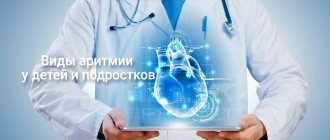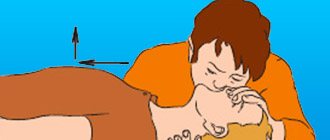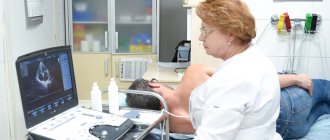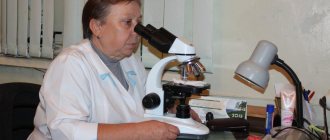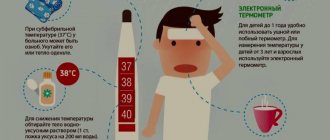The cessation of cardiac and respiratory activity leads to a state of clinical death. It defines a short, reversible period between life and death. First aid provided in case of cardiac arrest within seven minutes allows you to return a person to normal existence.
This is possible because irreversible phenomena in brain cells due to hypoxia have not yet occurred. The lost functions are taken over by the remaining undamaged neurons.
You can learn more about the mechanisms of clinical death from this article.
Clinical experience shows that the period of clinical death is individual and can last from two to 15 minutes. And if hypothermia is used (artificial cooling to 8–10 degrees), it extends to two hours.
If cardiac arrest is recorded in a hospital, then doctors certainly have enough skills and resuscitation equipment to take immediate action to save the patient. There is special honey for this. staff of intensive care and resuscitation departments.
However, the place of assistance in the event of sudden death can be a work office, an apartment, a street, or any uncrowded room. Here, a person’s life depends on events carried out by random passers-by and witnesses.
How to give first aid
Every adult should be able to provide emergency first aid. It must be remembered that you only have 7 minutes for all actions. This is a critical period for restoring cerebral circulation. If the victim can be saved later, he faces complete disability.
Those around us are faced with a difficult task:
- provide, using indirect cardiac massage, an imitation of contractions to temporarily support the blood flow system;
- restore spontaneous breathing.
The sequence of actions depends on the number of people taking part in providing assistance. Two will do it faster. In addition, someone should call an ambulance and note the time.
- First you need to make sure that nothing in your mouth can interfere with breathing, clean the oral cavity with your finger, straighten your tongue;
- put the victim on a hard surface (ground, floor), tilt his head back;
- hit the sternum with a fist (a precordial blow can immediately “start” the heart);
- Heart massage is done by jerky pressure on the sternum, keeping your arms straight and resting them on the patient’s chest;
- At the same time, artificial respiration is carried out in the classical way “mouth to mouth” or “mouth to nose”; when breathing into the mouth, you need to pinch your nose with your fingers; it is important to hold the victim’s lower jaw with your hand, pushing it slightly forward (to prevent the tongue from retracting).
The massage continues until cardiac activity is restored and facial skin color returns to normal.
It is recommended to take passive “breaths” after every four compressions on the sternum. For hygienic purposes, a thin scarf or gauze can be applied to the victim’s face.
If the chest begins to rise on its own, it means that your own breathing has appeared. But if the pulse begins to be felt, and there are no respiratory movements, only artificial respiration should be continued.
The critical period for resuscitation is considered to be 20 minutes. After this, the biological stage of death is stated.
The arriving ambulance team will continue resuscitation measures.
What happens during the implantation procedure?
Typically, the implantation procedure is performed quickly, safely, and usually under local anesthesia. It does not require open heart surgery, and most patients return home within 24 hours. The following section is a general description of what happens during the implantation procedure. Your case may be different, you can discuss all the details with your doctor.
During implantation.
Typically, patients are sedated before the procedure and do not feel any pain. Your doctor will make a small incision in your upper chest and place electrodes through a vein into your heart. The doctor will then connect the electrodes to the implantable defibrillator and program the device. Next, an implantable defibrillator will be placed under the skin and the incision will be sutured. The doctor will check to see if the implantable defibrillator is working properly.
After the procedure.
After implantation of the device, the patient usually spends the night in the ward and can return home in the morning. You may feel a small bump under the skin where the device is located; this area may be sensitive. It is usually recommended to limit movement of the arm on the implanted side for 2-6 weeks. You can obtain more detailed care instructions from your doctor. However, you can expect a quick return to your previous activities after surgery. If you have any questions, please ask your doctor or nurse.
Starting life with an implantable defibrillator: the first six weeks.
It's time to start living a full life again. We hope it will be filled with hope and confidence. Of course, until healing occurs, you may experience some discomfort. Also, in order not to cause displacement of the electrodes, you may have to slightly limit the movements of your left hand. Typically these restrictions are recommended for 2-6 weeks. Your doctor will tell you in more detail what movements and strains you should avoid. If you have questions about what you can or cannot do before you recover, don't hesitate to ask your doctor or nurse. Your family and friends will be interested in hearing about your implantable defibrillator. You may want to show the implantation site and talk about the operation. Tell everyone how glad you are to feel recovered from your illness. Now is the time to tell your friends and family about what you are planning to do soon. Choose one of your favorite activities and make plans, think about how you will do it again. Believing in yourself and doing enjoyable, enjoyable things makes a big contribution to the healing process.
Living with Success: Achieving the Confidence You Need.
A new device for your heart will help you feel calm and confident. It is always on alert, constantly taking care of your heart 24 hours a day. If your implantable defibrillator detects a rhythm disorder, it sends an electrical impulse to restore it. You can imagine that this is an ambulance that is always nearby. And very soon you will feel the contribution of these positive effects in your everyday life. Remember that you will still need to continue taking your medications and have your device checked periodically by your cardiologist and electrophysiologist (heart rhythm specialist). Either way, your life is in your hands, so enjoy it. Keep making plans. Tell everyone how good you feel, what you have achieved thanks to this, and what you are going to do. For a high quality of life, identify what you enjoy doing and return to an active lifestyle. Always remember that if you have questions about any special activities, such as driving or returning to work, you should consult your doctor.
What happens after the shock: Have a plan.
If your implantable defibrillator detects an abnormal rhythm in your heart, it will automatically deliver therapy—a high-energy shock. Patients who have undergone such therapy describe this discharge as a sudden feeling of discomfort, sometimes even painful, but quickly passing. It also means that the implantable defibrillator has done its job and may have saved your life. Your doctor will give you specific instructions about what to do after the shock. Together with them, develop an action plan that suits you. This plan may include what you will immediately need to do and some of your favorite activities that you can continue to do after the discharge. Keep the plan in a convenient place so you can refer to it. Also, be sure to tell your loved ones and those who care about you about this plan so that they can understand how to help you. It is important to understand that what you were doing during the discharge did not cause it. Typically, you will be able to continue enjoying your favorite activities. Talk with your doctor about when you can return to your activities and whether any changes need to be made. Although the discharge may make you feel temporarily uneasy, it is important to return to your daily activities and focus on the things you love.
You create your own life.
Life is made up of moments, so the more pleasure we get from them, the more fruitful our life becomes. An implantable defibrillator can help you enjoy life more so you can look forward to the future that means so much to you. These can be simple, “earthly” joys, such as walks in the park, working in the garden, or communicating with your loved ones. The important thing is that these moments often make life richer, so hurry up to enjoy them.
What can emergency doctors do?
At the ambulance stage, first aid is provided in case of cardiac arrest.
Ventilation of the lungs is carried out through a mask using an Ambu bag. To achieve full contact with the trachea and press the tongue, intubation is performed or a special tube is inserted, connecting it to the bag. Compression achieves the supply of air mass into the lung tissue.
If special equipment is available, the heart is defibrillated with an electric current.
The effect of the discharge can be enhanced by the administration of Adrenaline and Atropine. These are drugs that sharply increase myocardial excitability. After their introduction intracardially, a second attempt at defibrillation is made.
In the absence of a defibrillator, indirect massage continues.
In a car with an ECG device, it is possible to take an electrocardiogram, at least a single lead. It can be used to judge the presence of asystole or fibrillation.
After delivering the patient to the hospital
If the heart rhythm is successfully restored, urgent measures are taken to stabilize contractions and eliminate the metabolic consequences of clinical death.
The patient is placed in the intensive care unit.
It is connected to a heart rate monitor. This is important because restored heart contractions are prone to changes in rhythm and various disturbances. Antiarrhythmic drugs help compensate for them.
An alkaline solution must be injected drip-wise to eliminate acidosis.
In the hospital, it is possible to conduct an examination and identify the cause of cardiac arrest.
In case of fluid compression and cardiac tamponade, pericardiocentesis is immediately performed with pumping out the exudate. If pneumothorax is detected, installing a drainage to expand the lung helps.
If spontaneous breathing is shallow and congestive wheezing is heard in the lower parts of the lungs, the patient is intubated and transferred to artificial mechanical ventilation with increased oxygen supply
Do I need an implantable defibrillator?
Doctors of several specialties deal with heart problems. A cardiologist treats problems such as high blood pressure, high cholesterol, and clogged arteries. An arrhythmia specialist focuses on problems with the heart's electrical system that affect how your heart beats. This specialist can determine whether you need an implantable defibrillator.
Typically, candidates for implantable defibrillators have one or more of the following risk factors:
- Heart failure;
- (a heart condition in which the heart's ability to pump blood is reduced);
- Previous myocardial infarction;
- One of the family members had sudden cardiac arrest;
- Low ejection fraction.
What is ejection fraction?
Ejection fraction is a measure of the percentage of blood that is ejected from the heart into the aorta during each contraction. Typically, at rest, a healthy heart, when contracting, throws out 50-70% of the blood in it. Many people with heart failure have an ejection fraction of less than 40%. A lower than normal ejection fraction means that your heart is not pumping efficiently and cannot meet your body's need for an efficient blood supply.
Why is it important to know your ejection fraction?
Your ejection fraction is one measure your doctor can use to recognize heart failure and assess your risk of sudden cardiac arrest. The latest medical research shows that people who have not had or have had sudden cardiac arrest with an ejection fraction of less than 40% are at greater risk of dangerously accelerated heart rates and sudden cardiac arrest.
How is ejection fraction measured?
Typically, a simple and painless method called echocardiography, or “cardiac ultrasound,” is used to determine ejection fraction. This method, which uses ultrasound to evaluate cardiac function, is widespread and can be performed in most medical institutions.
Examples of specific situations and algorithm for diagnosis and action
To analyze the cases that medical workers and people far from medicine have to deal with, let’s look at examples of situations that allow you to think about your role in resuscitation.
Situation one
The young man fell in front of the employees, without even having time to let go of the briefcase with documents. A lot of people gathered around and they called an ambulance. While waiting for the doctors, everyone groans and remembers various cases of illness from their experience. The result was that the patient died, and the ambulance doctor could only note signs of biological death.
Unfortunately, a similar situation often arises anywhere. When people, instead of taking active pre-medical actions, panic, get lost, and miss time for resuscitation.
And some even start talking about the “prohibition of approaching the corpse until the police arrive.” Who said that the victim is already a corpse? Has anyone even dared to check your pulse and pupils? Such a death remains on the conscience of the crowd.
Imagine that you or your loved ones might find yourself in a similar situation
Situation two
A woman was seen lying on the street with rare breathing movements, unconscious, and her pulse could not be determined. Passers-by called an ambulance. They started doing chest compressions and assisted breathing.
The result is that before the team arrived, it was possible to maintain blood circulation “manually,” which slowed down irreversible changes and reduced hypoxia.
Often people begin to doubt the need for chest compressions due to assumptions about fainting or a stroke. There is very little time left for doubt. When fainting, the pulse is preserved, the pupils react to light. With a stroke, facial asymmetry, changes in the tone of the limbs on one side, and pupils of different widths are possible. The pulsation is also preserved.
Situation three
Ambulance doctors received a call for the cardiology team because the caller correctly described the victim’s symptoms.
Having loaded the patient onto a gurney, she was wheeled into the car; the intensive care vehicle has technical equipment for all activities
The algorithm of actions has been worked out in practice:
- the tongue is attached to the lower jaw with a special curved air duct tube, an Ambu bag for manual artificial respiration is attached to it;
- Adrenaline solution was injected intracardially with a long needle;
- in the absence of pulsation in the carotid and femoral arteries, if heart sounds cannot be heard, defibrillation is indicated;
- indirect massage and artificial respiration last 20 minutes.
During this time, the car reaches the hospital and the question of the advisability of continuing resuscitation measures is decided.
Situation four
Cardiac arrest occurred during intestinal surgery. The anesthesiologist noticed a sudden drop in blood pressure in a patient under anesthesia, and cardiac activity stopped on the monitor. Surgeons note blanching of the internal organs and mesentery.
Algorithm of actions:
- the surgical intervention is terminated;
- Adrenaline solution is injected into the subclavian vein;
- defibrillation is performed;
- in the absence of restoration of heart contractions, the discharge is repeated;
- between shocks, a soda solution is injected in a stream to prevent acidosis;
- the surgeon opens the diaphragm, inserts his hand into the chest cavity and manually massages the heart, squeezing and unclenching it.
The technique is called direct cardiac massage, it is possible with an open chest or from the abdominal cavity
The success of the measures is judged by the resumption of the rhythm on the monitor and the increase in pressure.
Surgeons notice the beginning of bleeding in the wound. The operation ends with minimal mechanical damage after the break. The diaphragm is sutured.
How does an implantable defibrillator work?
Depending on the programmed mode, the implantable defibrillator may initially send low-energy, painless electrical signals to restore rhythm. If they do not work, a stronger shock is sent. People describe this discharge as a sudden feeling of discomfort, sometimes even painful, but quickly passing. Often everything ends before you understand what actually happened. Another positive thing is that an implantable defibrillator protects you constantly, 24 hours a day.
Alternative resuscitation
The experience accumulated in different countries in resuscitation measures during cardiac arrest allows us to choose the most effective methods. Research in recent years has established the priority of cardiac mechanisms of clinical death (90% of cases) against the background of an intact respiratory system. Therefore, doubts arose about the need for emergency measures to restore breathing.
The state of Arizona uses the MICR methodology. She suggests doing several more intense cycles of chest compressions without mouth-to-mouth breathing.
The rules provide:
- in the first 2 minutes of resuscitation, mandatory 100 chest compressions per minute (200 in total);
- then pulse control, administration of Adrenaline and defibrillation;
- repeat this way 2 more times;
- only after this is tracheal intubation and artificial respiration performed.
The authors excluded cardiac arrest due to noncardiac causes (trauma, drowning) from the studies.
The technique is used by paramedics and firefighters. Comparison of effectiveness in terms of patient survival occurred only in out-of-hospital cases of clinical death. As a result, the percentage of those resuscitated increased from 1.8 (using classical methods of massage and artificial respiration) to 5.4.
The program was included in the recommendations of the Cardiological Association in the USA.
The UNIVERSAL algorithm (named after the first letters of the stages) has been published in Russia and is used by many. In it, artificial ventilation is placed in third place in the step-by-step actions after the precordial stroke and the beginning of chest compressions. For inpatient conditions, pacing is recommended by introducing an electrode into the heart cavity through a subclavian catheter.
What is sudden cardiac arrest?
When the heart suddenly stops, it stops pumping blood.
Sudden cardiac arrest is not the same as a heart attack. A heart attack occurs when one or more of the arteries supplying blood to your heart becomes clogged or blocked. As a result, the heart muscle may suffer. This can be thought of as a problem with the “heart piping”. Sudden cardiac arrest can occur when the heart begins to beat at a dangerously fast rate. This can be thought of as an "electrical" heart problem. Even if the problem with the cardiac pipeline is corrected by angioplasty, bypass surgery, or some other method, the risk of sudden cardiac arrest still remains.
Causes of sudden cardiac arrest.
If you have heart failure or have had a heart attack, there is a chance that your heart muscles are damaged. In this case, the conduction (electrical) system of the heart may also suffer, creating a risk of sudden cardiac arrest. If this situation applies to you, consult with your doctor about the advisability of using an implantable defibrillator for safety reasons.
Sudden cardiac arrest has no warning signs.
Some people may experience palpitations or dizziness, which is a warning sign that a dangerous rhythm disorder may be occurring. But in the vast majority of cases, sudden cardiac arrest occurs without warning. There is no drug that is 100% effective in preventing sudden cardiac arrest. The most effective treatment for sudden cardiac arrest is defibrillation. Defibrillation is the application of a high-energy electrical shock to the heart to restore normal heart rhythm. To prevent death, defibrillation must be performed within a few minutes.
An implantable defibrillator is always ready.
Ambulance crews use external defibrillators. A small device implanted under your skin, an implantable cardioverter defibrillator, can also restore your heart's rhythm and save your life. An implantable defibrillator is always ready to help, monitoring your heart function around the clock. If your implantable defibrillator detects an abnormal rhythm, it automatically provides therapy. An implantable defibrillator is always ready to help you. You can consider it an ambulance that is always with you.
How are the consequences of clinical death corrected?
If help is late, then it is not possible to fully restore body functions. The brain suffers the most. A person loses intelligence and memory. Failure is possible after forced hypoxia of the kidneys and liver. It's impossible to fix anything.
Is life necessary in exchange for intelligence? There is no solution to the problem yet
During early recovery, the patient receives long-term maintenance therapy with antiarrhythmic drugs and nootropic drugs for brain cells. He is periodically examined by doctors (a cardiologist and a neurologist) and carried out a follow-up examination. In the absence of complications, the patient can return to work subject to restrictions (physical activity, night shifts, stressful situations, hypothermia are contraindicated).
You should always remember the limited ability of internal organs to restore damaged functions, especially the brain and heart. Nature gave man the opportunity to use them once. Not everyone gets a second chance.
How to evaluate the effectiveness of cardiac massage?
The effectiveness of cardiac massage is assessed according to the following criteria:
- the appearance of a pulse in the carotid, femoral and radial arteries;
- increase in blood pressure to 60–80 mm Hg;
- constriction of the pupils and the appearance of their reaction to light;
- disappearance of bluish color and “deadly” pallor;
- restoration of spontaneous breathing.
If, after 30–40 minutes from the start of cardiac massage, artificial respiration and drug therapy, cardiac activity is not restored, the pupils remain wide, without reaction to light, it can be considered that irreversible changes and brain death have occurred in the body, and it is advisable to stop resuscitation. If obvious signs of death appear (link to card), resuscitation may be stopped earlier.

